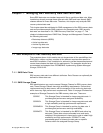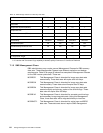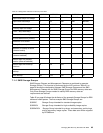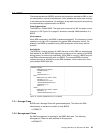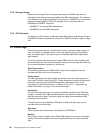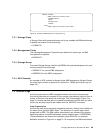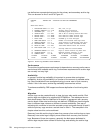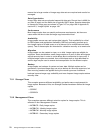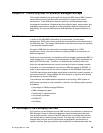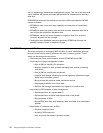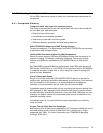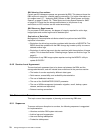
Managing DB2 Recovery Data Sets with SMS 71
directly to tape.
Backup
The archive logs are a backup of the active logs. DB2 can create dual archive
logs. There is no need for an additional backup of the archive logs.
7.4.1 Storage Class
Storage Class SCDBARCH is an example of a Storage Class for archive logs.
This Storage Class has high availability and good performance.
• SCDBARCH
7.4.2 Management Class
Two different Management Classes are used for the archive logs. One is used for
the primary copy and the other for the secondary copy. Both allow migration of
the data sets. The reason for defining two separate Management Classes is to
enable a physical separation of the two copies.
The Management Class MCDBICM is used for the image copies retained longest
and for the archive logs. This ensures equivalent expiration dates for image
copies and archive logs.
The Management Class MCDBLV2 is used for the secondary archives. This will
directly migrate the secondary copy to level 2 of DFSMShsm and so ensure a
physical separation of the two archive copies.
• MCDBICM, used for primary archive log data sets
• MCDBLV2, used for secondary archive log data sets
7.4.3 Storage Group
Primary and secondary archive logs are allocated on volumes of the SGDBARCH
Storage Group. These data sets are migrated independently on different dates.
This is determined by their Management Class.
• SGDBARCH
An alternative to the above Storage Group could be a TMM Storage Group, but
only for the secondary copy of the archive logs. A TMM Storage Group simulates
a tape device on disk. Multiple data sets are placed together on the same tape.
This could have a performance impact if this archive log is required for a recovery
or a restart.
7.4.4 ACS Example
An example of ACS routines to allocate these SMS classes and Storage Group
for archive logs is shown in Appendix B, section B.2, “Archive Logs” on page 191.
7.5 Image Copies
Image copies are the backup of user and system data in a DB2 subsystem. For a
well managed backup and recovery policy, the amount of data in image copy data
sets exceeds the amount of production data by at least a factor of three. This



